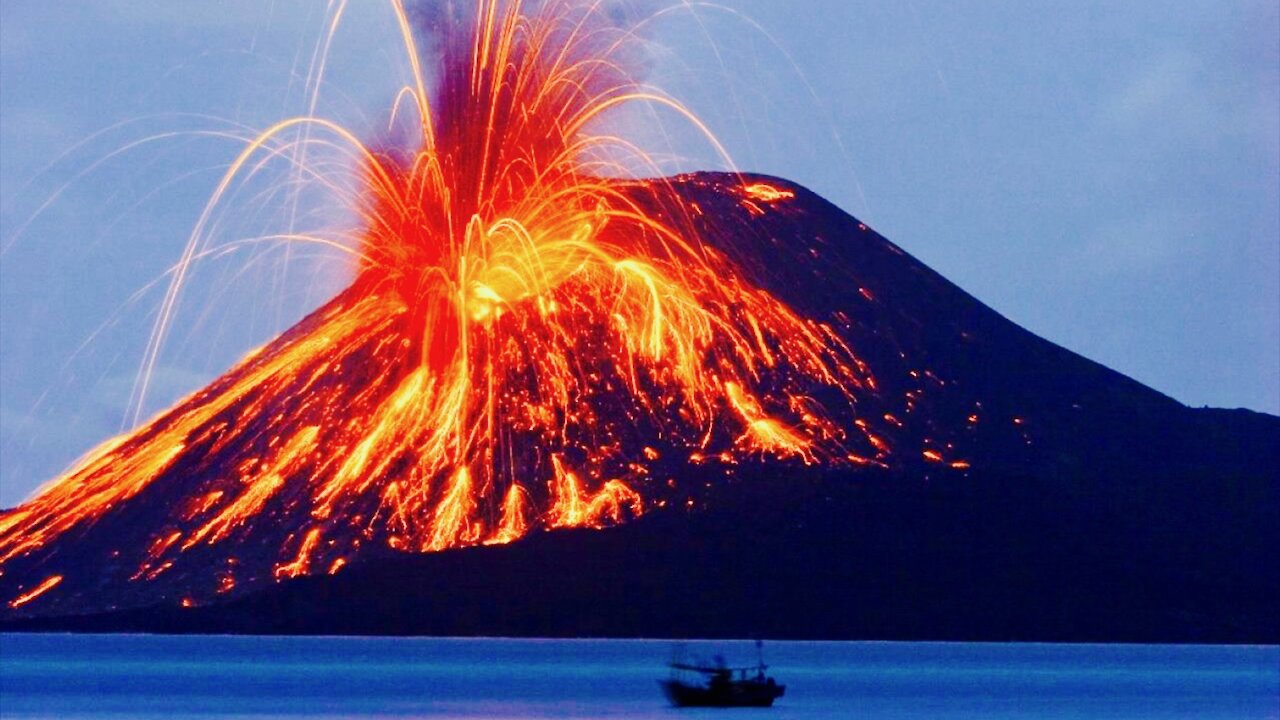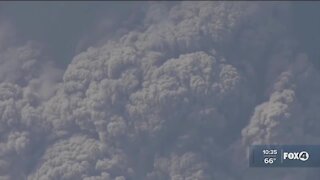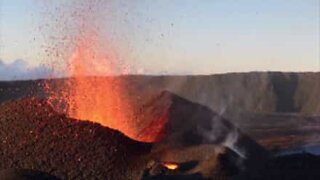Premium Only Content

5 Most Deadly Volcanic Eruptions In Human History
Courtesy of Tech Insider -- Music: The Walwrath (Escape From Hell Mix) by Dhruva Aliman Amazon- https://amzn.to/2B9tGa7 - https://dhruvaaliman.bandcamp.com/album/road-of-fortunes - http://www.dhruvaaliman.com/ - Spotify - https://open.spotify.com/artist/5XiFCr9iBKE6Cupltgnlet ...History's Most Destructive Volcanoes- Deccan Traps – Deccan Plateau, India – about 60 million years ago-- The Deccan Traps are a set of lava beds in the Deccan Plateau region of what is now India that cover an area of about 580,000 square miles, or more than twice the area of Texas. The lava beds were laid down in a series of colossal volcanic eruptions that occurred between 63 - 67 million years ago. The timing of the eruptions coincides with the disappearance of the dinosaurs, the so-called K-T mass extinction (the shorthand given to the Cretaceous-Tertiary extinction). Evidence for the volcanic extinction of the dinosaurs has mounted in recent years, Putting in question that an asteroid impact did the dinosaurs in. Yellowstone Supervolcano – Wyoming, United States – about 640,000 years ago When this gigantic supervolcano erupted, it sent 250 cubic miles (1,000 cubic kilometers) of material into the air. The eruptions have left behind hardened lava fields and calderas, depressions that form in the ground when material below it is erupted to the surface. The magma chambers thought to underlie the Yellowstone hotspot also provide its geysers. Some researchers have predicted that the supervolcano will blow its top again, an event that would cover up to half the country in ash up to 3 feet deep, a study predicts. Thera – island of Santorini in the Aegean Sea - sometime between 1645 B.C. and 1500 B.C. Geologists think that Thera exploded with the energy of several hundred atomic bombs in a fraction of a second. The island that hosted the volcano, Santorini, was home to members of the Minoan civilization. The inhabitants suspected the volcano was going to blow and evacuated. Those residents may have escaped. The volcano may have severely disrupted the culture, with tsunamis and temperature declines caused by the massive amount of sulfur dioxide it spewed out. Mount Vesuvius – Pompeii, Roman Empire (now Italy) – 79 A stratovolcano east of Naples, Italy. Stratovolcanoes are tall, steep, conical structures that periodically erupt explosively. They're commonly found where one of Earth's plates is subducting below another, producing magma. Vesuvius' most famous eruption is the one that buried the Roman towns of Pompeii and Herculaneum in rock and dust in 79, killing thousands. The ashfall preserved some structures of the town, as well as skeletons and artifacts that have helped archaeologists better understand ancient Roman culture. Laki – Iceland – 1783 The eruption freed trapped volcanic gases that were carried by the Gulf Stream over to Europe. In the British Isles, many died of gas poisoning. The volcanic material sent into the air also created fiery sunsets recorded by 18th-century painters. Extensive crop damage and livestock losses created a famine in Iceland that resulted in the deaths of one-fifth of the population. Tambora – Indonesia - 1815 The largest ever recorded by humans, ranking a 7 (or "super-colossal") on the Volcanic Explosivity Index, the second-highest rating in the index. The volcano, which is still active, is located on Sumbawa Island and is one of the tallest peaks in the Indonesian archipelago. It exploded so loudly that it was heard on Sumatra Island, more than 1,200 miles away. The death toll was estimated at 71,000 people. Clouds of heavy ash descended on many far-away islands. Krakatoa – Sunda Strait, Indonesia – 1883 The final eruption climaxed into a massive explosion on April 26. The eruption of this stratovolcano, situated along a volcanic island arc at the subduction zone of the Indo-Australian plate, ejected huge amounts of rock, ash and pumice and was heard thousands of miles away. The explosion created a tsunami with maximum wave heights at 140 feet killing about 34,000 people. Tidal gauges more than 7,000 miles away on the Arabian Peninsula registered the increased wave heights. Novarupta - Alaska Peninsula – June, 1912 One of a chain of volcanoes, part of the Pacific Ring of Fire — The largest volcanic blast of the 20th century. The powerful eruption sent 3 cubic miles of magma and ash into the air, which fell to cover an area of 3,000 square miles more than a foot deep. Mount St. Helens – Washington state, United States – May 18, 1980 Killed 57 people and caused damage for tens of miles. Winds blew 520 million tons of ash across the United States causing complete darkness in Spokane, Wash., 250 miles from the volcano. 15 miles of ash and dust blew into the air in just 15 minutes; falling in 11 states. The blast was preceded by a magma bulge on the north face of the volcano, and the eruption caused that entire face to slide away — the largest landslide on Earth in recorded history.
-
 1:03
1:03
Reuters
3 years agoCaribbean island rocked by volcanic eruptions
3941 -
 0:27
0:27
WFTX
3 years agoMultiple volcanic eruptions rock the Caribbean
74 -
 1:38
1:38
Buzzvideos - EN
4 years agoPhenomenal images of volcanic eruptions
11 -
 10:00
10:00
Captivated by Him
3 years agoThe Most Beautiful Day in History
64 -
 4:15
4:15
BrandBazaar
3 years agoMeet The Most Intelligent Criminal In History
83 -
 2:32:15
2:32:15
Matt Kohrs
19 hours agoRumble CEO Chris Pavlovski Talks $775M Tether Partnership || The MK Show
112K30 -
 28:23
28:23
Dave Portnoy
19 hours agoDavey Day Trader Presented by Kraken - December 23, 2024
147K40 -
 59:29
59:29
BonginoReport
10 hours agoTrump, Murder Plots, and the Christmas Miracle: Evita + Jack Posobiec (Ep.110) - 12/23/2024
154K128 -
 2:59:14
2:59:14
Wendy Bell Radio
13 hours agoNothing To See Here
125K72 -
 2:12:18
2:12:18
TheDozenPodcast
1 day agoIslam vs Christianity: Bob of Speakers' Corner
111K30